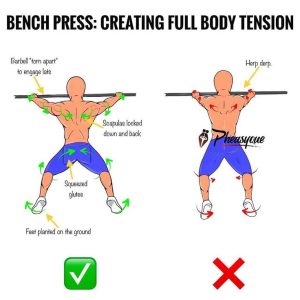
When it comes to strength training exercises, few can rival the effectiveness and raw power of the deadlift. This compound exercise targets multiple muscle groups, including the hamstrings, glutes, lower back, and core. However, performing the deadlift without proper form and technique can lead to injury and limit your gains. In this article, we will explore the key principles and strategies for optimizing your deadlift technique to maximize your strength and muscle gains.
1. Establish a Solid Setup
Before attempting a deadlift, establishing a solid setup is crucial. This includes standing with your feet shoulder-width apart, toes slightly pointed outwards. Position the barbell over the middle of your feet, ensuring it is close to your shins. Bend down by hinging at the hips while keeping your chest lifted and your back straight. Grip the bar just outside your knees with an overhand grip.
HTML Markup: <img src=”deadlift setup.jpg” alt=”Deadlift Setup” width=”500″ height=”300″>
2. Engage Your Core and Brace Your Abs
As you prepare to lift the barbell, engage your core muscles by bracing your abs. This will provide stability and protect your lower back. Imagine as if someone is about to punch you in the stomach, and tighten your core in response. Maintaining this tension throughout the lift will help you maintain proper alignment and prevent any unnecessary rounding or arching of the back.
3. Initiate the Lift with Your Legs
Many individuals mistakenly rely heavily on their lower back to lift the weight, leading to potential injuries. To optimize your deadlift technique, focus on initiating the lift with your legs. Drive through your heels as you stand up, pushing the ground away from you. This leg drive will activate the powerful muscles of the posterior chain, including the hamstrings and glutes, allowing you to lift heavier weights more efficiently.
4. Maintain a Neutral Spine
Throughout the lift, it is important to maintain a neutral spine. Avoid rounding or excessively arching your back, as this can put unnecessary strain on the vertebral discs, leading to injury. By keeping your chest lifted and your shoulder blades pulled back, you will ensure proper alignment and distribute the load more evenly throughout your body.
5. Control the Descent
After completing the lift, it is crucial to control the descent of the barbell. Resist the urge to simply drop the weight, as this can not only damage the equipment but also increase the risk of injury. Lower the barbell back down by hinging at your hips and bending your knees, maintaining control throughout the entire movement. This eccentric phase of the deadlift enhances muscle growth and improves overall strength.
6. Gradually Increase Weight and Monitor Progress
As you become more comfortable with proper deadlift technique, gradually increase the weight lifted to continue challenging your muscles. However, it is essential to monitor your progress and ensure you maintain good form throughout. Recording your lifts, seeking guidance from a qualified coach, or using a mirror can help you identify any flaws and make necessary adjustments.
HTML Markup: <img src=”deadlift progress.png” alt=”Deadlift Progress Chart” width=”700″ height=”400″>
In Conclusion
The deadlift is a powerful exercise that can elicit significant gains in strength and muscle development. By optimizing your technique, you not only enhance your performance but also reduce the risk of injury. Remember to establish a solid setup, engage your core, initiate the lift with your legs, maintain a neutral spine, control the descent, and gradually progress. With consistent effort, dedication, and attention to proper form, you’ll unlock your full deadlift potential and reap the rewards of increased strength and muscularity.

